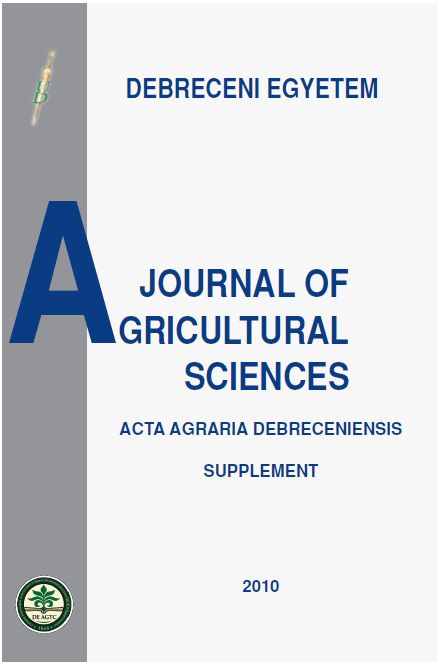Grain yield and quality of maize hybrids in different FAO maturity groups
Authors
View
Keywords
License

This work is licensed under a Creative Commons Attribution 4.0 International License.
How To Cite
Abstract
An improvement in the quality of maize grain by increasing the level of components responsible for its biological value is possible
by using genetic means. However, a change in the genotype, together with improving the nutrient properties of the grain, also has some
adverse consequences connected with a fall in yield and in resistance to diseases.
Field experiments were conducted during three years (2003, 2004and 2005) to evaluate environmental effects on grain yield and
quality responses of maize hybrids. Twenty one hybrids of various maturity groups (FAO 150-400) were planted to achieve an optimum
(60-70 000 plants per hectare) plant populations and grown under the medium-N (80 kg N ha-1) fertilization. Environmental conditions
significantly affected maize hybrid responses for grain yield, starch, oil and protein contents, and consequently, starch, oil and protein
yields per hectare. Hybrids of flint type, which have a short vegetation period, had high protein and oil content but the yield averages
were low due to the slower rate of starch incorporation. Hybrids of the dent type have a longer growing season and more intense
carbohydrate accumulation, but low protein and oil contents. In wet years there was a higher rate of starch accumulation, while dry
years are favorable for protein and oil accumulation. Positive correlation existed between starch content and grain yield and 1000-
weight as well as between oil content and volumetric weight among tested hybrids. Negatively correlation existed between grain oil and
starch content as well as between oil content and grain yield and 1000-weight. Thus, end-users that require high quality maize may need
to provide incentives to growers to off set the negative correlation of grain yield with oil and protein content.

 https://doi.org/10.34101/ACTAAGRAR/I/8390
https://doi.org/10.34101/ACTAAGRAR/I/8390